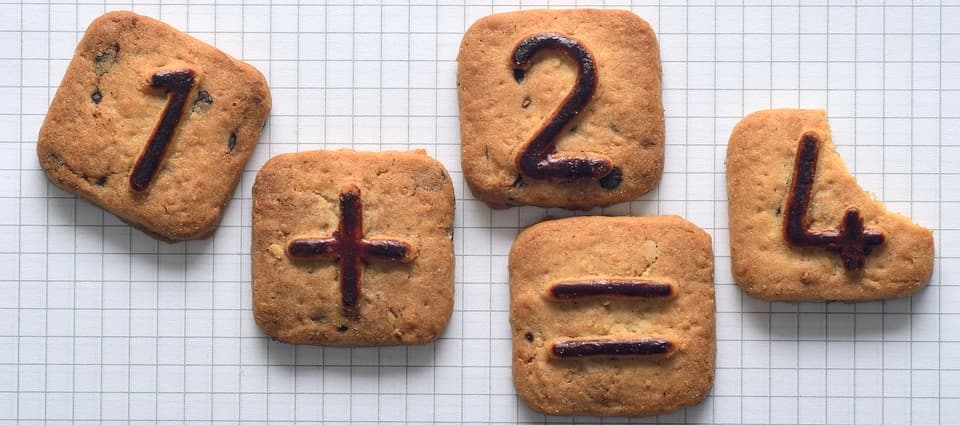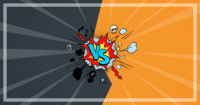Split testing is the key to discovering what’s working and what isn’t in your campaigns. But, do you know how to do it effectively? In this article, we’ll show you exactly how to split-test for maximum optimization.
How you deal with failure will determine your success. However, you need to pinpoint why you failed in the first place. That’s why you need to split-test.
Split-testing means testing two or more variations of a campaign next to each other to see which performs better. For example, you might have an advert running on Facebook, but you have two images which you think could work. How do you decide which is the right image? Test them both to find out.
One of the first keys to split-testing is to only test one variable at a time. This makes it easier to know exactly what’s wrong. If you split test a picture and text at the same time, how will you know which part worked or had problems when you get the results back?
The reason lots of people avoid split-testing is that there is an almost infinite number of variables. However, if you don’t split-test, you’ll be wasting time and money trying to find answers in the dark.
Split-testing shines a light on what works and what doesn’t and, even though starting out can seem scary, the more you do it, the more you’ll uncover the secrets to your success.
To help you get started on your journey, here are our top tips to split-testing effectively.
Catalog the Elements of Your Campaign

Deciding which picture to use on your Facebook Ad may seem important at first, however, it will ultimately only affect one small part of your campaign. When starting out, you need to give yourself an overview of your whole campaign. You can do this by making a list of every element in your funnel.
By compiling all of your elements into a list, you will be able to see all the areas that could impact your campaign’s performance. It will also make it much easier to see where you should be doing more research and what you should be testing.
A good catalog will even double up as a checklist so that you can see which elements you have optimized and which you haven’t so that you don’t miss anything.
Here is what a Campaign Catalog might look like:
Overview
- Campaign Name: FBTshirts50%Sale
- Demographic: Men, 25-35
- GEO: UK
- Campaign Type: PPC
- Operating System: Mobile: Android vs iOS
Strategy
- Angle: FOMO 50% off Limited Sale
- Traffic Sources: Facebook vs Instagram
- Funnel: Prelander vs Direct Link to Landing Page
Ad Copy
- Headlines: Click-bait vs Informative
- Body Copy: Aggressive vs Mild
- Images: Various Shirt Designs
- Call-to-action: Buy Now, More info etc.
Once you’ve got an overview like this, you’ll find it much easier to plan your split-testing and optimise your campaign.
Prioritize

Every element of your campaign will affect the overall outcome, however, some elements will affect it more than others. Therefore, it’s important to decide which elements to give priority to and test first.
Worrying about whether or not to use ‘50% off’ or ‘half-price’ without first seeing if the angle works is a bit like trying to fix a leaky tap on the Titanic. It won’t make a difference if the bigger issues aren’t resolved.
Therefore, test out your angle and your targeting first. If people begin to convert then you know that you are heading in the right direction. Then you can start optimizing the smaller details to improve your conversion rate.
Collect Data and Use it to Highlight Problems

Every time you run a split-test, you’ll get data which can help you decide what to do next. For example:
If you have a Facebook Ad and it isn’t generating any interest, then you might decide to re-target to a different demographic.
Now, you have clicks but not that many, so you decide to make it more aggressive.
More people click and they seem really engaged, but they aren’t converting once they get to your offer.
You now know that something must be wrong on the landing page, so you need to optimize that.
Your data will point you to the issues of your campaigns, which is why it is so important to collect and examine it regularly.
Most campaigns will be slow at first, but if you follow the data, then there is no reason why you can’t be successful.
Using your data to highlight problems will also save you a lot of time when it comes to split-testing, as you’ll be able to prioritize much faster and you won’t be stuck wondering what to do next.
Beware of Dodgy Data

While data can point you in the right direction, it can also be misleading if you don’t know what to look out for. There may be factors affecting your statistics that you aren’t aware of. Here are a couple of the most common ones:
Testing Time

When you test your campaigns can affect your data significantly, and it’s worth split-testing times to find out when your audience is most active. For example, you might do a quick test at 6 pm on Friday and get great results. Then, you decide to send all of your traffic to that offer and see terrible results. This could be because it’s now 10 pm and everyone has gone out for the evening or are spending time with their families.
Always consider the time when you’re testing and try to find out when your audience is most engaged.
Data Size

The amount of data you get matters. If you don’t get enough traffic then won’t be able to get an accurate overview of your campaign’s performance. Also, it’s important to remember that when you are split-testing, each campaign will receive less data individually, so give them a bit more time to gather the quantities needed for results.
Test One Thing at a Time

If you want to know what is working and what isn’t, then it’s really important to only split-test one thing at a time. It might be tempting to do multivariate testing to save on time and money, however, it will be much more difficult to see where problems lie and will require much higher volumes of traffic. If you get it wrong, then it will ultimately end up costing you more.
If you follow these basic rules for split-testing then your results will be much better and you will be able to optimize much more effectively and efficiently. It takes time, effort and practice, but in the long run the results will be well worth it.

